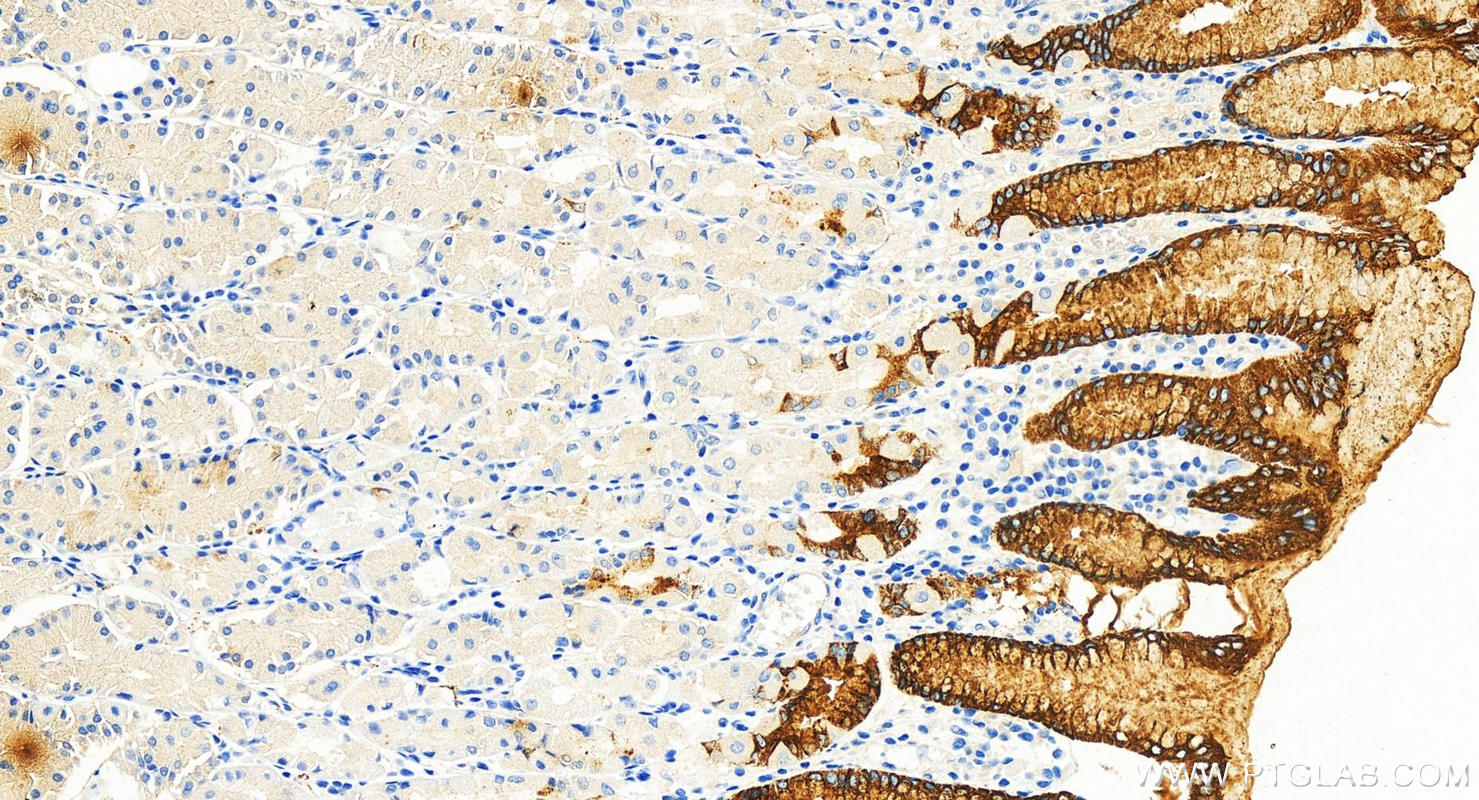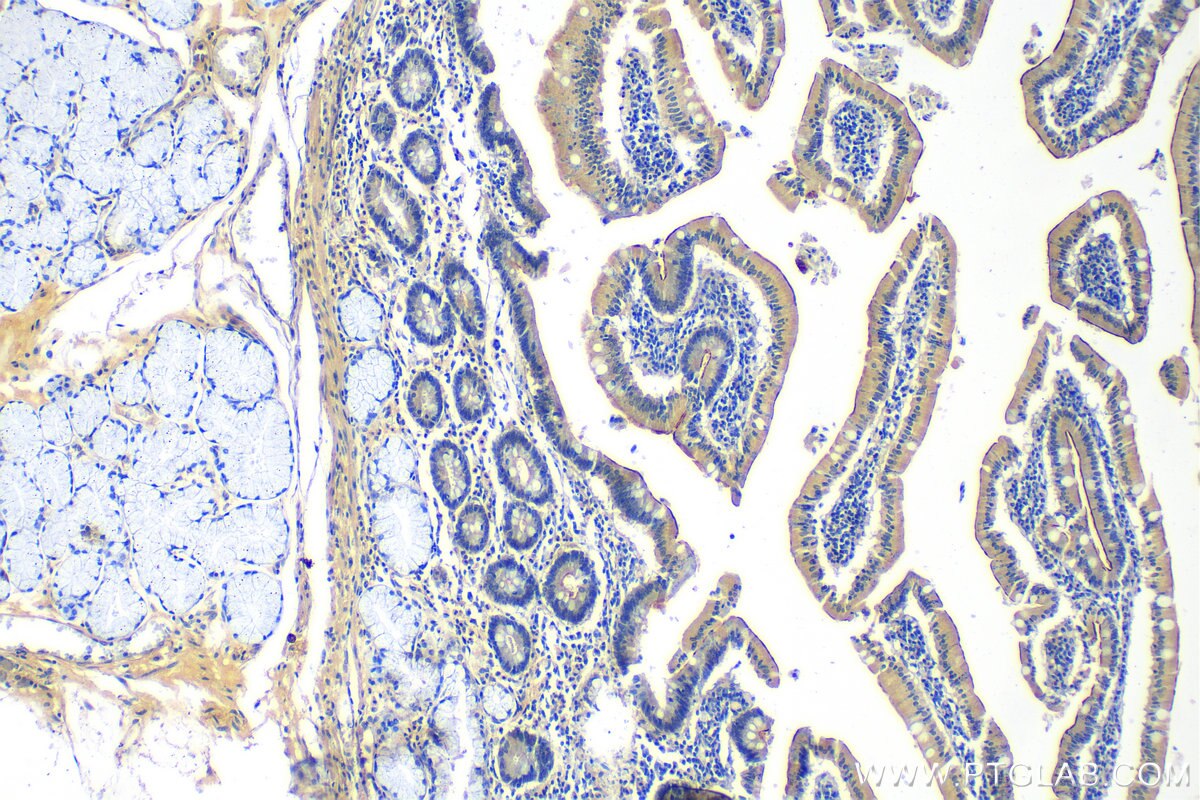MUC5AC Polyklonaler Antikörper
MUC5AC Polyklonal Antikörper für WB, IHC, ELISA
Wirt / Isotyp
Kaninchen / IgG
Getestete Reaktivität
human
Anwendung
WB, IHC, ELISA
Konjugation
Unkonjugiert
Kat-Nr. : 30408-1-AP
Synonyme
Geprüfte Anwendungen
| Erfolgreiche Detektion in WB | MCF-7-Zellen |
| Erfolgreiche Detektion in IHC | humanes Magengewebe Hinweis: Antigendemaskierung mit TE-Puffer pH 9,0 empfohlen. (*) Wahlweise kann die Antigendemaskierung auch mit Citratpuffer pH 6,0 erfolgen. |
Empfohlene Verdünnung
| Anwendung | Verdünnung |
|---|---|
| Western Blot (WB) | WB : 1:200-1:1000 |
| Immunhistochemie (IHC) | IHC : 1:400-1:1600 |
| It is recommended that this reagent should be titrated in each testing system to obtain optimal results. | |
| Sample-dependent, check data in validation data gallery | |
Produktinformation
30408-1-AP bindet in WB, IHC, ELISA MUC5AC und zeigt Reaktivität mit human
| Getestete Reaktivität | human |
| Wirt / Isotyp | Kaninchen / IgG |
| Klonalität | Polyklonal |
| Typ | Antikörper |
| Immunogen | MUC5AC fusion protein Ag30190 |
| Vollständiger Name | mucin 5AC, oligomeric mucus/gel-forming |
| Berechnetes Molekulargewicht | 586 kDa |
| Beobachtetes Molekulargewicht | 290 kDa |
| GenBank-Zugangsnummer | NM_001304359 |
| Gene symbol | MUC5AC |
| Gene ID (NCBI) | 4586 |
| Konjugation | Unkonjugiert |
| Form | Liquid |
| Reinigungsmethode | Antigen-Affinitätsreinigung |
| Lagerungspuffer | PBS with 0.02% sodium azide and 50% glycerol |
| Lagerungsbedingungen | Bei -20°C lagern. Nach dem Versand ein Jahr lang stabil Aliquotieren ist bei -20oC Lagerung nicht notwendig. 20ul Größen enthalten 0,1% BSA. |
Hintergrundinformationen
MUC5AC (Mucin-5AC ) is a gel-forming glycoprotein of the gastric and respiratory epithelium. It can protect mucous membranes from infection and chemical damage by binding to inhaled microorganisms and particles, which are then cleared by the mucociliary system. (PubMed:14535999,PubMed:14718370)
Protokolle
| PRODUKTSPEZIFISCHE PROTOKOLLE | |
|---|---|
| WB protocol for MUC5AC antibody 30408-1-AP | Protokoll herunterladen |
| IHC protocol for MUC5AC antibody 30408-1-AP | Protokoll herunterladenl |
| STANDARD-PROTOKOLLE | |
|---|---|
| Klicken Sie hier, um unsere Standardprotokolle anzuzeigen |






